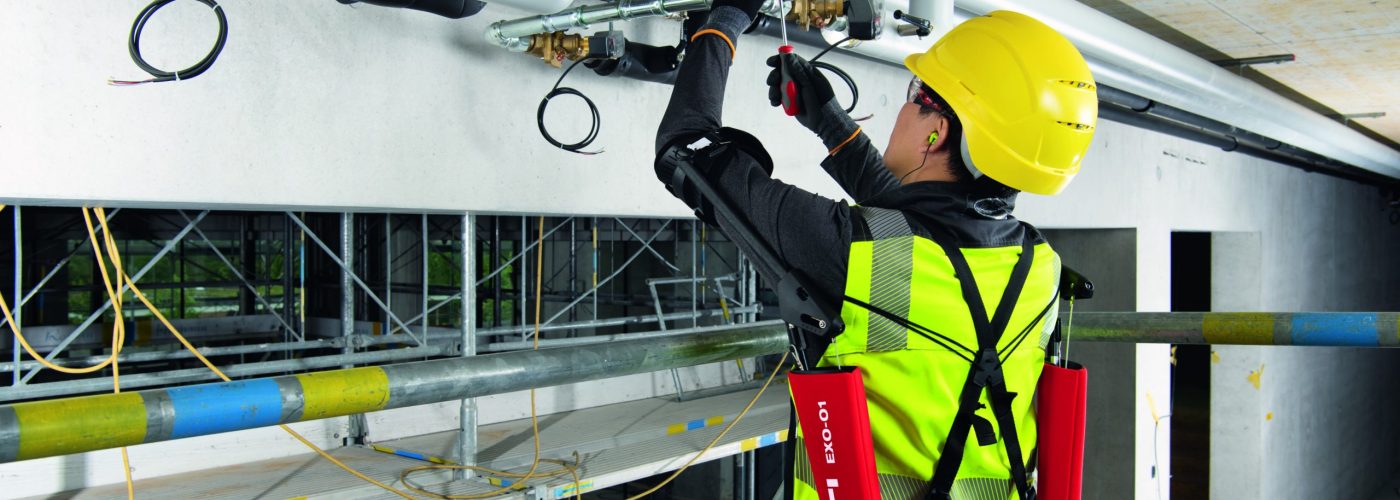Musculoskeletal Injuries in Construction
Health and safety is a key priority for today’s businesses and employees. Although the majority of people working in the construction industry care about health and safety and are diligent in their work, the construction industry remains one of the most dangerous sectors to work in when it comes to musculoskeletal injuries.1
According to statistics from the UK government agency, Health and Safety Executive (HSE), there were 498,000 workers reported to be suffering from work-related musculoskeletal injuries in 2018/19 with 41% of these injuries relating to upper limbs and neck.2 Altogether, HSE reports that 8.9 million working days were lost due to work-related musculoskeletal injuries in 2019/20.3
Overhead Work: A Major Risk Factor
Musculoskeletal injuries develop when biomechanical demands, such as extreme postures, repeatedly exceed the worker’s physical capacity during construction work. In this regard, overhead work has been identified as a major risk factor for this type of injury in the shoulder region.
Working with the arms raised over 90° for more than 10% of a worker’s working hours increases the risk of work-related musculoskeletal injuries in the shoulder region by one to two thirds.4
Support is Needed
Overhead work remains a very common part of construction work today. And despite growing automation, numerous strenuous tasks cannot be fully automated, at all or at a reasonable cost. One solution to physically relieve workers while keeping them in control of the task is to assist them with an exoskeleton. An exoskeleton is a wearable system that provides physical assistance to its user through assistive torques and/or structural support. As the system is worn on the body and follows the user’s movements, no – or very limited – modifications of the workplace are required. Exoskeletons are drawing great interest from the industry to help alleviate some of the issues caused by overhead construction work.
Hilti Exoskeleton: Addressing Productivity and Increased Demand
xoskeletons are designed to enhance productivity by reducing stress on the body, causing less pain and fatigue due to a reduced load on muscles and joints. This reduced stress and increased comfort when working enables workers to improve their health and reduce the amount of sick days they take, provided that they still take the required rest breaks for physical and mental wellbeing. Tests have proved the effectiveness of the exoskeleton in terms of reducing stress on a worker’s muscles and joints, to improve the health of a worker and minimise days lost through ill health. By being able to retain skilled workers for longer periods of time due to less employee sick days, construction companies can utilise exoskeletons to improve operations twofold by improving employee wellbeing and increasing on-site productivity.
Read the MRI Report here >
References:
- HSE, Construction Statistics in Great Britain, 2020
- HSE, Health and Safety at Work: Summary Statistics for Great Britain, 2019
- HSE, Work related musculoskeletal disorder statistics (WRMSDs) in Great Britain, 2020
- Grieve J, Dickerson C., Overhead work: Identification of Evidence-based Exposure Guidelines. Occupational Ergonomics, 2008; 1: 53-66





